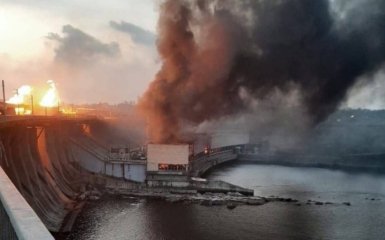On March 24, ecologists recorded a gradual improvement in water quality indicators in the Dnipro, where oil products leaked as a result of Russian missiles hitting the Dnipro HPP.
Environmentalists reported on the state of water in the Dnipro
Oil products entered the Dnipro River after a large-scale missile attack on the Dnipro HPP by the Russian Federation. But on March 24, there is already an improvement in water pollution.
This was reported by the press service of the Ministry of Environmental Protection and Natural Resources.
According to the results of research conducted by the laboratories of the State Water Agency and the State Ecoinspection, as of March 24, a gradual improvement in water quality indicators of the Dnipro River is recorded.
Thus, according to the results of the analysis, an excess of the content of oil products was found in two sampling locations, namely on the right bank at a distance of 1.4 km from the Dniprovska HPP — by 4.2 times and at a distance of 2.5 km from the Dniprovska HPP — by 2.9 times .
At a distance of 4.4 km from the Dniprovska HPP, excess oil products are not recorded.
In the drinking water intake area of the village As of March 23, a 2.12-fold increase in the concentration of petroleum products was recorded in the Belenka downstream, 30 km from the Dnipro HPP.
A slight increase in the value of the hydrogen index (pH) from 8.63 to 8.75 units was also recorded. pH at the norm is 6.5-8.5. It is emphasized that such values do not pose risks to the population.
Leakage of oil products in the Dnipro due to a Russian missile strike
Experts have already taken soil samples and will conduct laboratory tests to determine the level of contamination.
Samples are taken at the place of damage to the Dnipro HPP and in the most accessible places of the Dnipro River at a distance of one, one and a half and two kilometers below the dam.
Also determined are the areas clogged with destruction waste:
along the street Slavuticha — more than 7,200 square meters;
along the street Petro Sahaidachnoy (Borodynska) — more than 300 square meters.
Environmentalists also recorded the leakage of petroleum products into the Dnipro River. Water samples were also taken to determine environmental damage.
All received materials will be transferred to the Operational Headquarters of the DEI of Ukraine and law enforcement officers.
More on the topic
- Category
- Ukraine
- Publication date
- Додати до обраного


